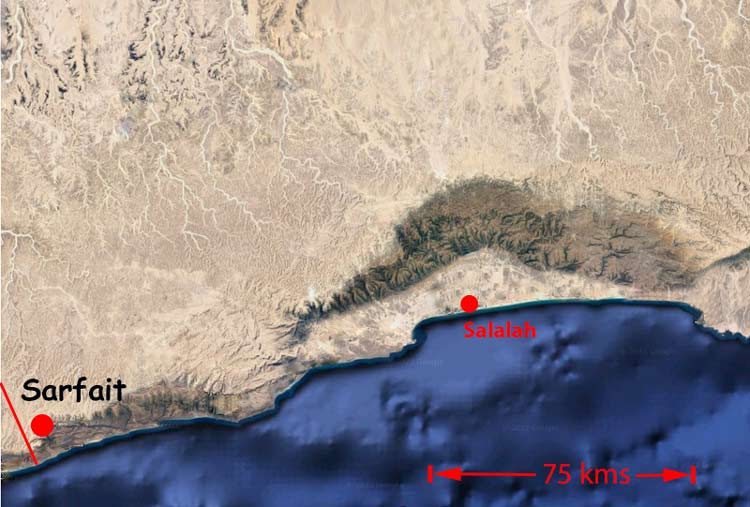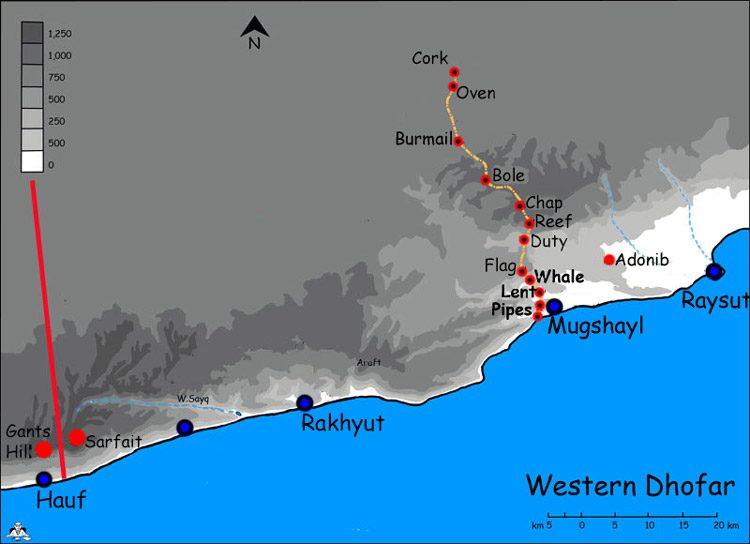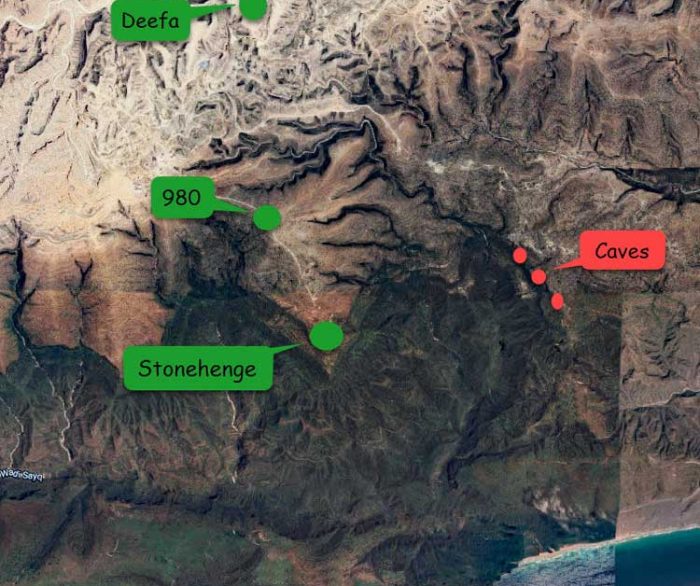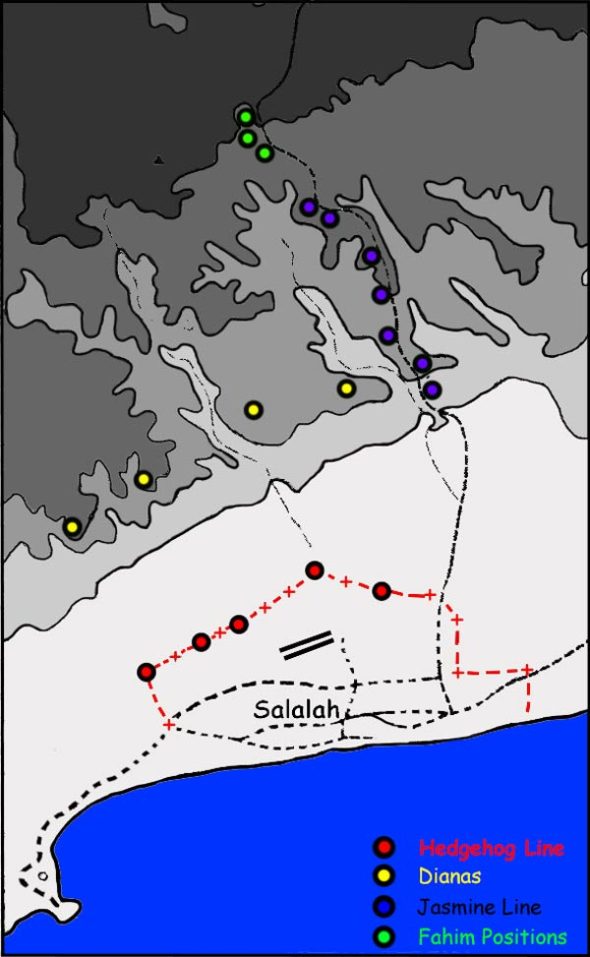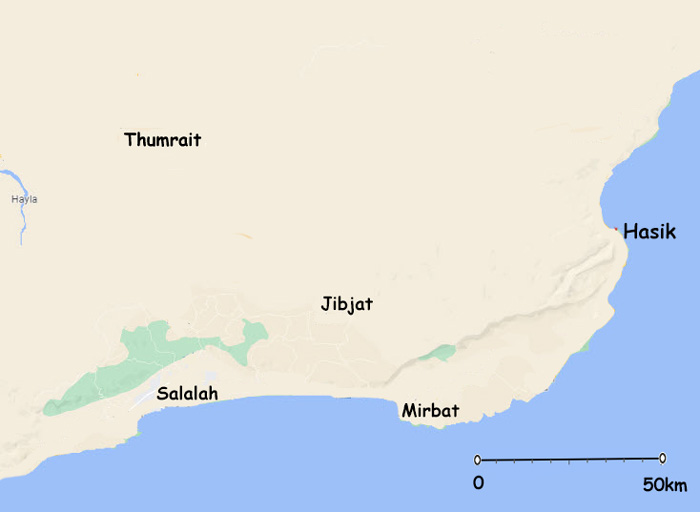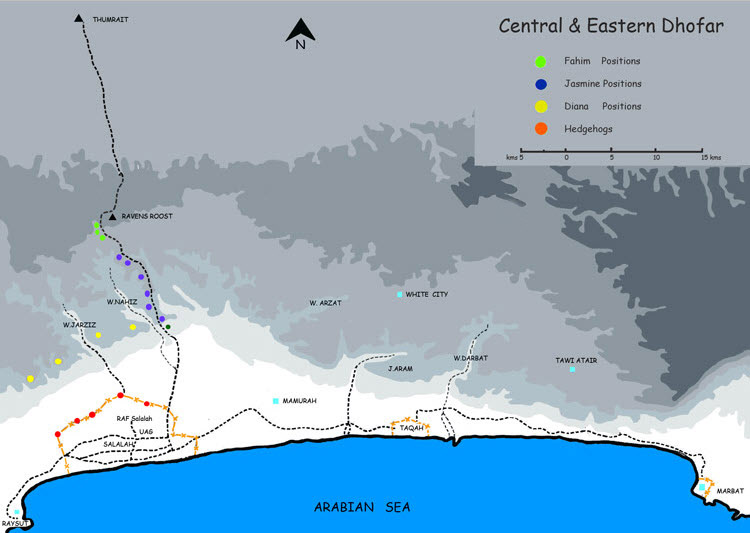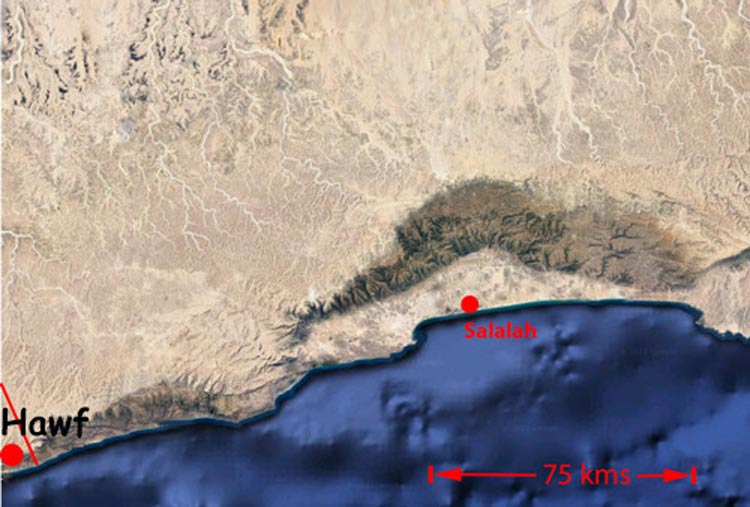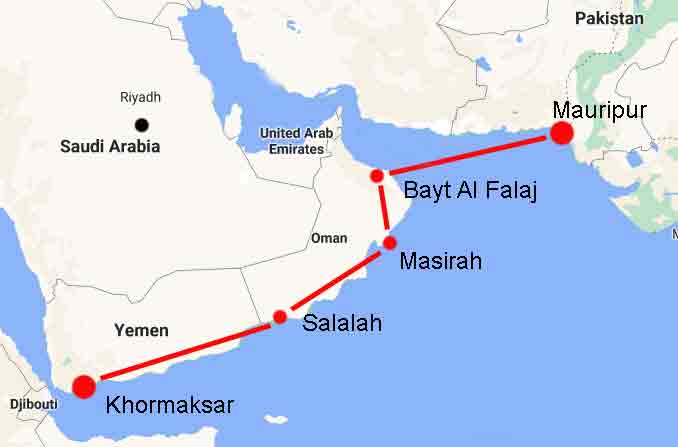Rowland White’s account of Mirbat, “Storm Front “, gleaned from some of the participants, researched from records in the National Archives and also from other sources, fleshes out other accounts and examines both what happened in the locality of the fort during the battle but also the background to the insurgency. The references in the back of his book are an invaluable resource for anyone interested in the Dhofar war.
There are further details available from the National Archives in the citations for honours and awards for
Attention has also been drawn by others to the awards for bravery that were or were not made to those who took part in the battle. A deal of bitterness and resentment has been expressed in some quarters about these awards or lack of them.
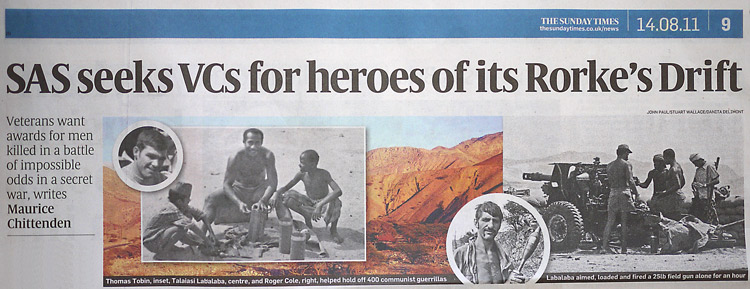
Veterans of the SAS have launched a campaign to win posthumous Victoria Crosses for two unsung heroes who died fighting a forgotten battle against overwhelming odds during a secret war. Prince William, acting in an unofficial capacity, has unveiled a statue to one of the heroes inside the SAS’s camp at Hereford. But the life-size bronze figure was paid for by an American multi-millionaire, the public cannot see it and there have been no medals for the two men who died in a conflict at the height of the cold war.
The survivors of the battle of Mirbat in Oman in July 1972 have dubbed it the SAS’s Rorke’s Drift, a reference to the stand by British soldiers against the Zulus in 1879 Like Queen Victoria’s soldiers, the nine SAS men who defended their camp in a fisherman’s house close to the Omani port of Mirbat were outnumbered by more than 25 to 1 “The difference being that our Zulus were all armed with AK-47s instead of spears,” said Roger Cole, 67, then a corporal and now the co-author of a new book, SAS Operation Storm (Hodder & Stoughton), about the battle in which he raked the enemy with machinegun fire from the roof.
He and his fellow soldiers were attacked by at least 400 communist guerrillas determined to seize the port. They were awaken before dawn by mortar fire as the Russian-backed rebels used dried-out wadis like trenches to try to sneak upon the British positions. Sergeant Talaiasi Labalaba, 30, a Fijian known to his comrades-in-arms as “Laba”, aimed, loaded and fired a 251b field gun—which usually has a crew of four – on his own for an hour to keep them at bay. Finally an incoming round smashed his face and jaw and he dropped, mortally wounded, into a gun-pit full of empty shell cases. Trooper Thomas Tobin, 24, ran 700 yards across the battlefield, firing and moving in a manoeuvre known as “pepper potting” to reach him before he was himself shot in the head with an AK-47 round.
Both men are buried yards from each other under a cypress tree in the SAS churchyard in Hereford. Laba was mentioned in dispatches, the lowest honour that can be awarded. Tobin received nothing. Their bravery helped the SAS to win the six-hour battle which left 200 of the enemy dead or badly wounded. But the outcome was far more significant than the bodies lying in the sand.
The SAS had been invited to Oman by the sultan to help his small army put down the insurgency. They operated under the pseudonym of the British Army Training Team. If the guerrillas had won that day, they would have gone on to take control of the Strait of Hormuz through which 90% of the world’s oil flowed. It would have given the Soviet Union a strategic stranglehold on the region.
When the smoke cleared, Cole – who had broken off briefly mid-battle to feed the SAS’s pet cats from a tin of fish – helped to tend three of the enemy’s wounded, feeding cheese to one. Their hands touched. Cole said last week: “He looked at me. He spoke perfect English. He said: ‘How many friends have you lost today? I said one, maybe two. He said he had lost a brother and a cousin. We welled up. We had tears in our eyes. They weren’t like the baddie enemy then. We had a common bond.”
The SAS believes the lack of recognition for Laba and Tobin is linked to their backgrounds. Laba was one of 50 Fijians who had been recruited, like Gurkhas, to fight in the British Army; Tobin was the son of poor Irish immigrants who had started his military career in the catering corps. Cole said: “It is one of the big reasons I have written the book. I understand they could not give them Victoria Crosses at the time because this was a secret war. But then the hushpuppy warriors of the MoD forgot all about it.”
Richard Belfield, an award-winning documentary filmmaker who is his co-author, said: “There was a rationing of medals. The regiment has been angry ever since over who got the medals and who didn’t.
“An anonymous donor gave the regiment some money and said why don’t you erect a statue to one soldier who absolutely epitomises the regiment. They didn’t give it to Paddy Mayne or David Stirling, who founded the regiment. It went to Laba. But he only got mentioned in dispatches and Tobin got absolutely nothing. “Part of the argument was that this was a secret war and people would wonder what was happening in Oman if the medals were announced. But there is a real anger in the regiment that these great heroes have never been properly recognised.”
Helen Tobin, a solicitor and one of Tobin’s three sisters, said on their behalf:
“It was a battle in which a real band of brothers faced overwhelming odds and we do not believe their heroism, and that of their other comrades, was ever given the recognition that was their due. “We hope as these events are revisited that recognition will be forthcoming.”
The Ministry of Defence said: “It is MoD policy not to comment on special forces matters and we see no reason to change that policy on this occasion . . . recommendations for honours and awards are made by commanding officers, before being passed up the chain of command for. . . consideration by the MoD armed forces operational awards committee.”
and a week later on the 21st of August Lord Ashcroft contributes

Nearly 40 years after one of the greatest battles ever fought by the SAS, there has been a call to right a wrong: to award posthumous Victoria Crosses to two unsung heroes who sacrificed their lives fighting a largely forgotten battle during a secret war in Oman in the 1970s.
Sergeant Talaiasi Labalaba, 30, and Trooper Thomas Tobin, 24, were killed at the battle of Mirbat in 1972, when nine SAS soldiers confronted an enemy force estimated to be between 250 and 400 strong.
It was dawn on July 19, 1972, when the Adoo, a group of highly trained, heavily armed communist guerrillas, tried to seize the port of Mirbat on the Arabian Sea.
After a series of setbacks, they were looking for a big military victory in their battle with the Sultan of Oman’s troops and their SAS allies.
The attack came during the monsoon season, on a day when it was raining lightly and with low cloud cover. The guerrillas’ initial aim was to target a small detachment of gendarmerie,
slitting the throats of the eight men occupying a watch-point on the edge of the port.
However, things did not go to plan and an exchange of gunfire was heard by the nine SAS men staying in a nearby British Army Training Team house. As Kealy saw the waves of enemy rebels advancing, he was soon barking orders to his men.
Labalaba, known affectionately to his comrades as “Laba”, ran some 500 yards to a gun-pit to fire a 25-pounder gun single-handedly, even though, for maximum effect, it needed to be manned by five men.Labalaba knew that if the gun fell into enemy hands, they would sweep through the port. I fully support the calls, revealed by The Sunday Times last week, for posthumous VCs to be awarded to Labalaba, a formidable Fijian soldier, and Tobin, a young medic of Irish descent. Indeed, I was so concerned that the courage of the two men had been overlooked that, in 2008, I sponsored the Battle of Mirbat Memorial at the National Memorial Arboretum in Staffordshire.
In fact, there is a third name on the memorial. Major Mike Kealy commanded the SAS team on the day of the battle. Kealy, who in 1972 was still a captain, survived the battle but died from exposure during an SAS training exercise on the Brecon Beacons in 1979.
Winner, who fought at Mirbat and later took part in the Iranian embassy siege, has said: “So to keep the war secret, all they gave him [was] MID mentioned in dispatches). You can get that for walking up the Falls Road [in Belfast]. The guy deserved a VC for what he did.”
A new book, SAS Operation Storm, co-authored by Roger Cole, who took part in the battle as an SAS corporal, has also championed the cause of both men.
Helen Tobin, a solicitor and one of the dead medic’s three sisters, wants justice for her brother too. “It was a battle in which a real band of brothers faced overwhelming odds and we do not believe their heroism, and that of their comrades, was ever given the recognition due. We hope… that will be forthcoming,” she said.
The Victoria Cross was instituted by royal warrant in 1856 for what Queen Victoria said ought to be “for most conspicuous bravery or some daring pre-eminent act of valour or self-sacrifice or extreme devotion to duty in the presence of the enemy”.
Surely these emotive words accurately describe the circumstances in which Labalaba and Tobin lost their lives. And surely, too, the time is now right for their bravery, at long last, to be properly recognised.
Lord Ashcroft, KCMG, is an international businessman and author.
He has amassed the world’s largest collection of VCs, currently on display at the Lord Ashcroft Gallery in the Imperial War Museum, and has written three books on gallantry
